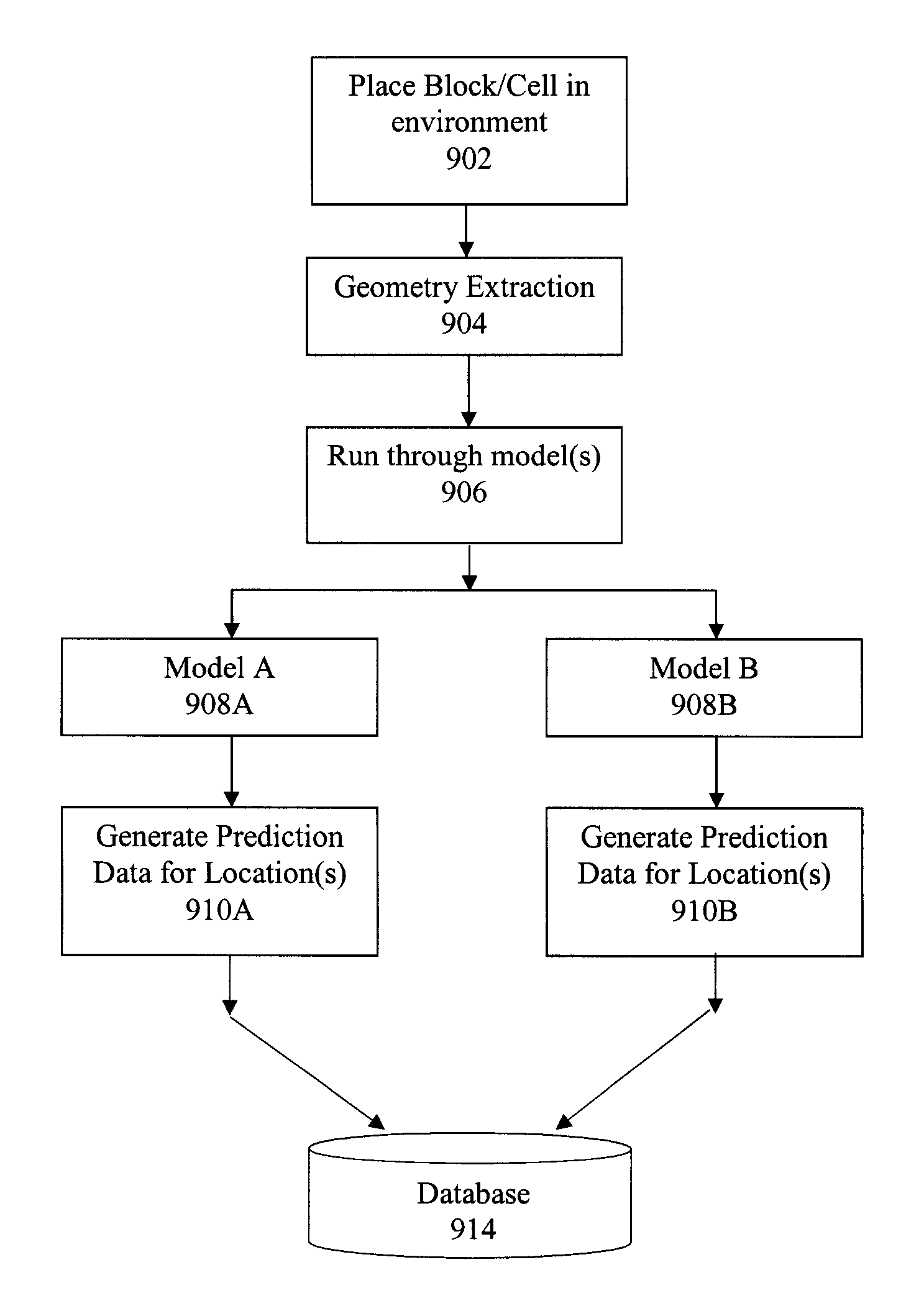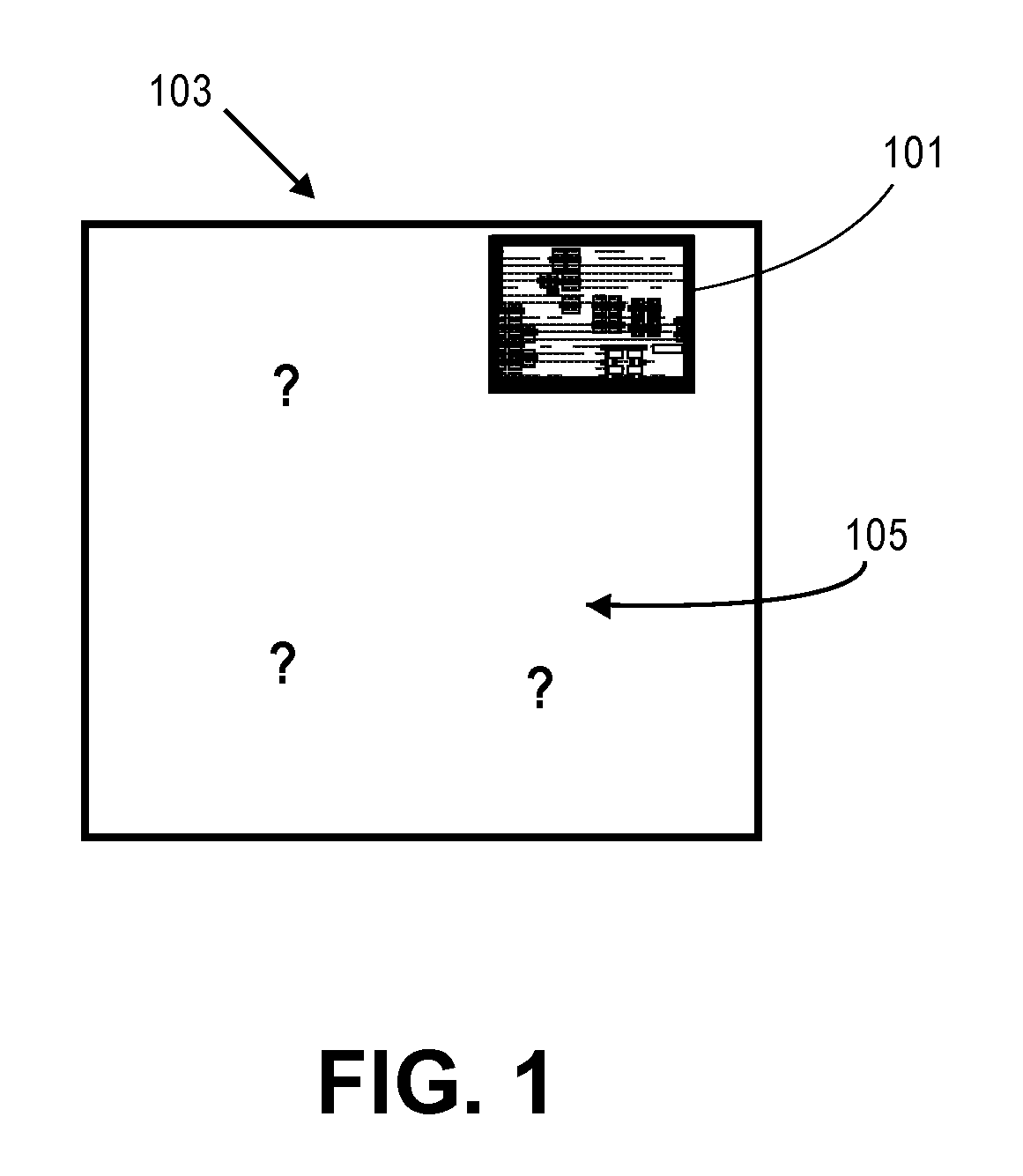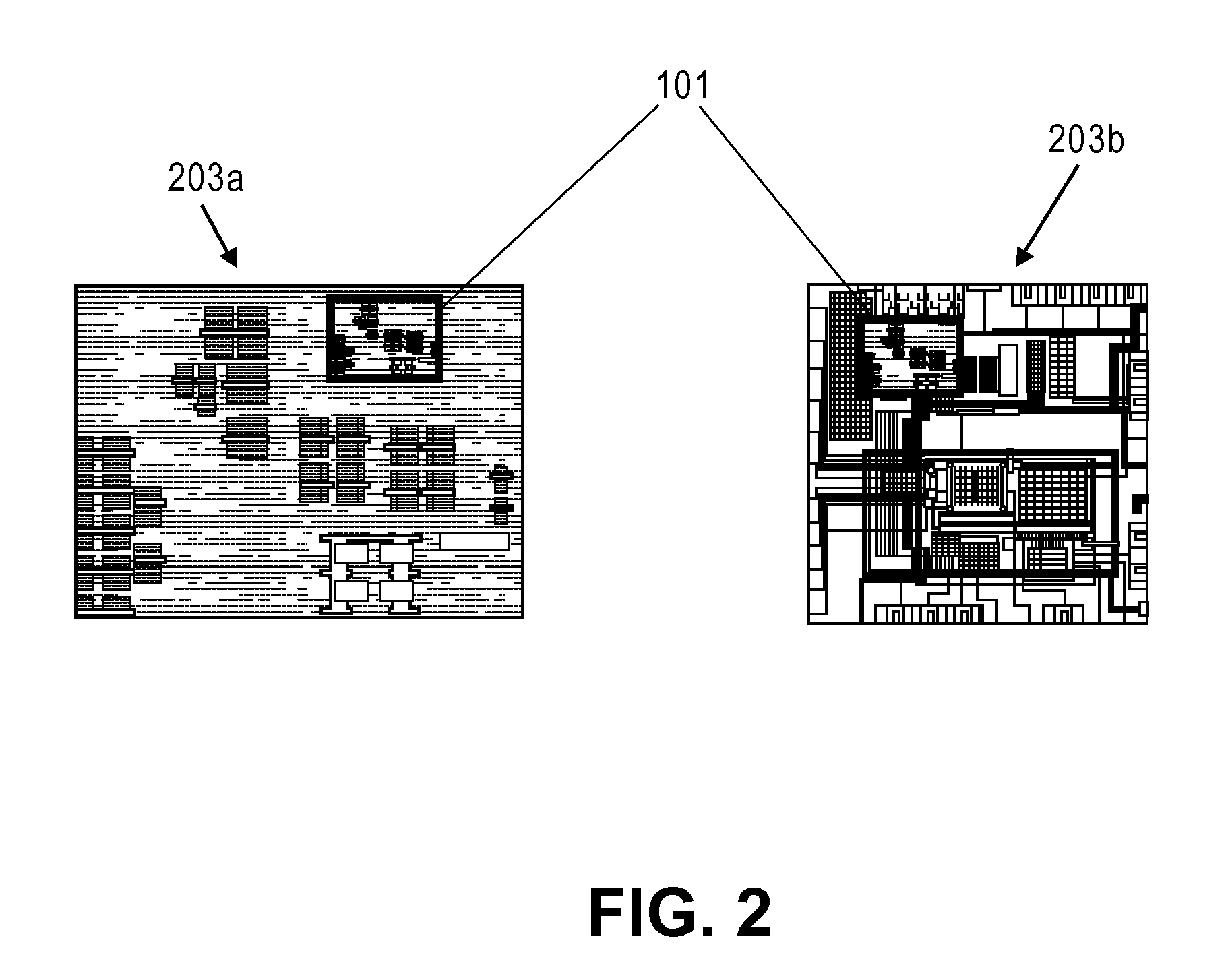Method and system for implementing context simulation
a simulation and context technology, applied in the field of context simulation, to achieve the effect of minimizing a variation in the thickness of post-cmp film, minimizing a variation in surface topography, and large long-range variation
- Summary
- Abstract
- Description
- Claims
- Application Information
AI Technical Summary
Benefits of technology
Problems solved by technology
Method used
Image
Examples
Embodiment Construction
[0028]As used herein, the term “model” refers to a set of data that identifies one or more specific characteristics within an IC design, layout, and / or data relating to its effect, manufacturability, and / or usability. Examples of such models include manufacturability models, CMP (chemical metal polishing) models, lithography models, and electrical models.
[0029]Typically, manufacturing models are run on IC designs that are complete or nearly complete. By operating upon complete or nearly complete designs, this provides sufficient information for an EDA tool to perform the appropriate analysis to extract manufacturing and pattern-related effects. The key limitation of the existing approaches is that they can only be performed later in the design process. If it is desired to compute such effects earlier in the design process, then conventional approaches cannot satisfy this requirement.
[0030]Embodiments of the present invention address key disadvantage of prior approaches which are res...
PUM
 Login to View More
Login to View More Abstract
Description
Claims
Application Information
 Login to View More
Login to View More - R&D
- Intellectual Property
- Life Sciences
- Materials
- Tech Scout
- Unparalleled Data Quality
- Higher Quality Content
- 60% Fewer Hallucinations
Browse by: Latest US Patents, China's latest patents, Technical Efficacy Thesaurus, Application Domain, Technology Topic, Popular Technical Reports.
© 2025 PatSnap. All rights reserved.Legal|Privacy policy|Modern Slavery Act Transparency Statement|Sitemap|About US| Contact US: help@patsnap.com



